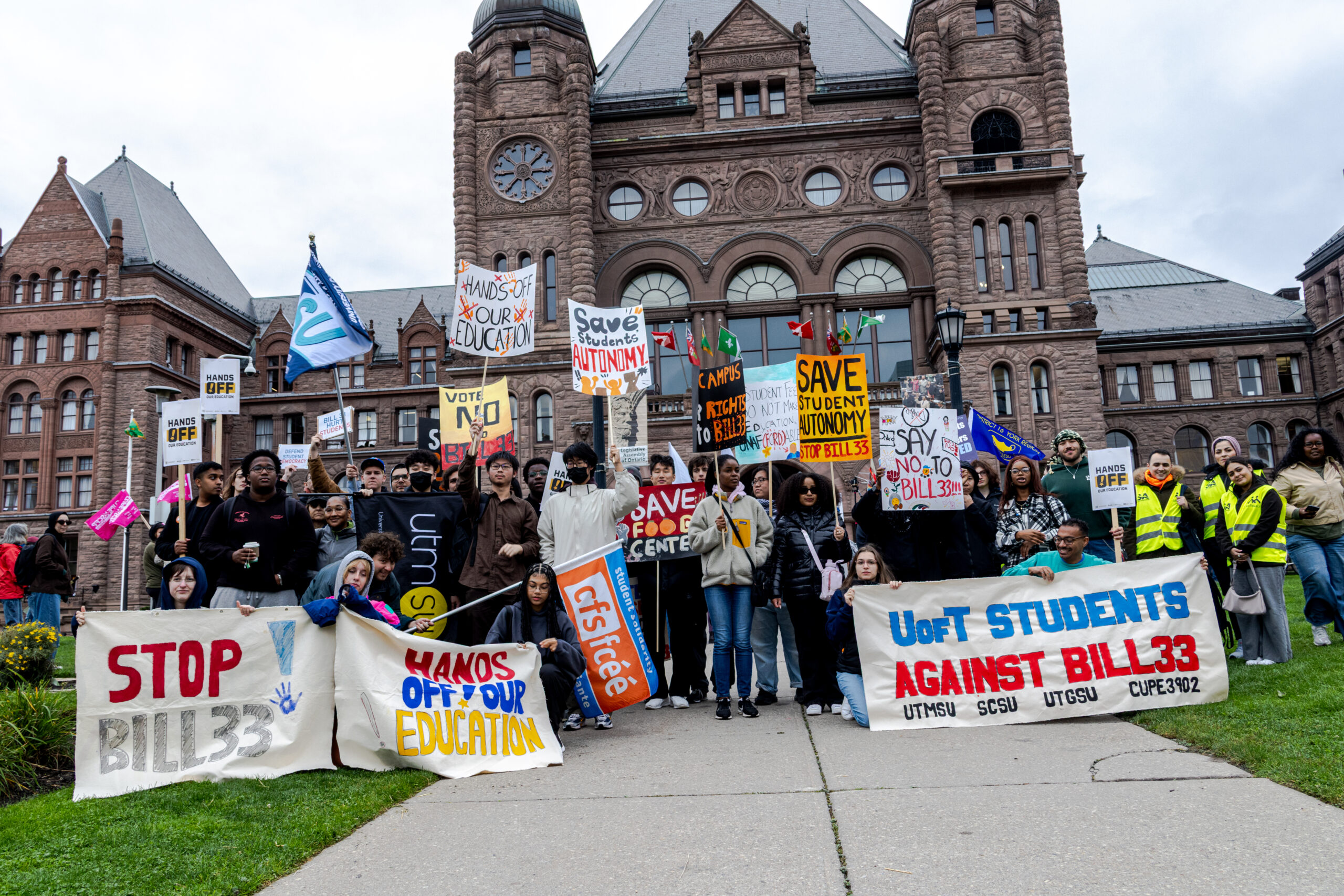Expansions will allow for program consolidation, says college president Anne Sado
Story updated Jan. 25
When it comes to helping drive waterfront revitalization, George Brown College is showing no signs of letting up.
Fresh off Toronto City Council’s decision to sell “Block 3”, a parcel of land adjacent to Waterfront campus, the college announced an additional expansion located at Daniels Waterfront—City of the Arts.
A stone’s throw away from the existing Waterfront campus, the facility comes with a $59 million price tag, including $15.6 million in funding from the federal government’s Post-Secondary Institutions Strategic Investment Fund. The Dialog has learned that the more than $43 million remaining cost for the expansion will be covered by college funds, fundraising efforts and through mortgage financing.
Scheduled to open in September 2018, the location is expected to house approximately 1,800 students and a total of nine programs, including graphic design, game programming and interaction design and development. Making the move will be part of the school of design, including the institute without boundaries, as well as the newly unveiled “innovation exchange.”
A central plank of the college’s presence, the innovation exchange’s 20,000 square feet will include a virtual and augmented reality lab, as well as classrooms dedicated to connecting students with employers.
“The new school of design and the innovation exchange facility that we’re building at the Daniels City of the Arts project concretizes a vision that George Brown has been building over many years as a college,” Luigi Ferrara, dean of the centre for arts, design and information technology, said at the announcement. “It’s a college that’s highly connected to industry; it’s serving societal needs by preparing graduates who combine critical thinking skills and practical skills.”
Whether between education and government, or the public and private sectors, partnership is a central theme of this expansion that was frequently referred to by Adam Vaughan, the Liberal member of Parliament (MP) for Spadina-Fort York.
With this year’s 150th anniversary of Confederation in mind, Vaughan spoke of how we build stronger communities “so that we can have a stronger country.”
“Building complete neighbourhoods in this city involves building with your post-secondary institutions, whether universities or colleges,” said Vaughan. “So this project stimulates the diversification of the waterfront, and in doing so delivers a complexity to the waterfront that makes it a real community.”
From an organizational perspective, the relocation of programs is certain to have a domino effect. According college president Anne Sado, not only does it mean moving away from the uncertainty of leased space, but it might also allow for broader consolidation.
“Right now we’ve got the school of design located at both Richmond St. and 341 King,” said Sado. “Eventually the IT people will hopefully move down to our new building that we want to build here beside our existing Waterfront campus, so that will free up space for other programs at Casa Loma to grow, because we have our construction engineering technology which is in high, high demand.”
With files from Steve Cornwell


